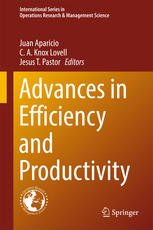

Most ebook files are in PDF format, so you can easily read them using various software such as Foxit Reader or directly on the Google Chrome browser.
Some ebook files are released by publishers in other formats such as .awz, .mobi, .epub, .fb2, etc. You may need to install specific software to read these formats on mobile/PC, such as Calibre.
Please read the tutorial at this link: https://ebookbell.com/faq
We offer FREE conversion to the popular formats you request; however, this may take some time. Therefore, right after payment, please email us, and we will try to provide the service as quickly as possible.
For some exceptional file formats or broken links (if any), please refrain from opening any disputes. Instead, email us first, and we will try to assist within a maximum of 6 hours.
EbookBell Team

4.7
26 reviewsThis book grows from a conference on the state of the art and recent advances in Efficiency and Productivity. Papers were commissioned from leading researchers in the field, and include eight explorations into the analytical foundations of efficiency and productivity analysis. Chapters on modeling advances include reverse directional distance function, a new method for estimating technological production possibilities, a new distance function called a loss distance function, an analysis of productivity and price recovery indices, the relation of technical efficiency measures to productivity measures, the implications for benchmarking and target setting of imposing weight restrictions on DEA models, weight restrictions in a regulatory setting, and the Principle of Least Action.
Chapters on empirical applications include a study of innovative firms that use innovation inputs to produce innovation outputs, a study of the impact of potential “coopetition” or cooperation among competitors on the financial performance of European automobile plants, using SFA to estimate the eco-efficiency of dairy farms in Spain, a DEA bankruptcy prediction model, a combined stochastic cost frontier analysis model/mixture hazard model, the evolution of energy intensity in nine Spanish manufacturing industries, and the productivity of US farmers as they age.